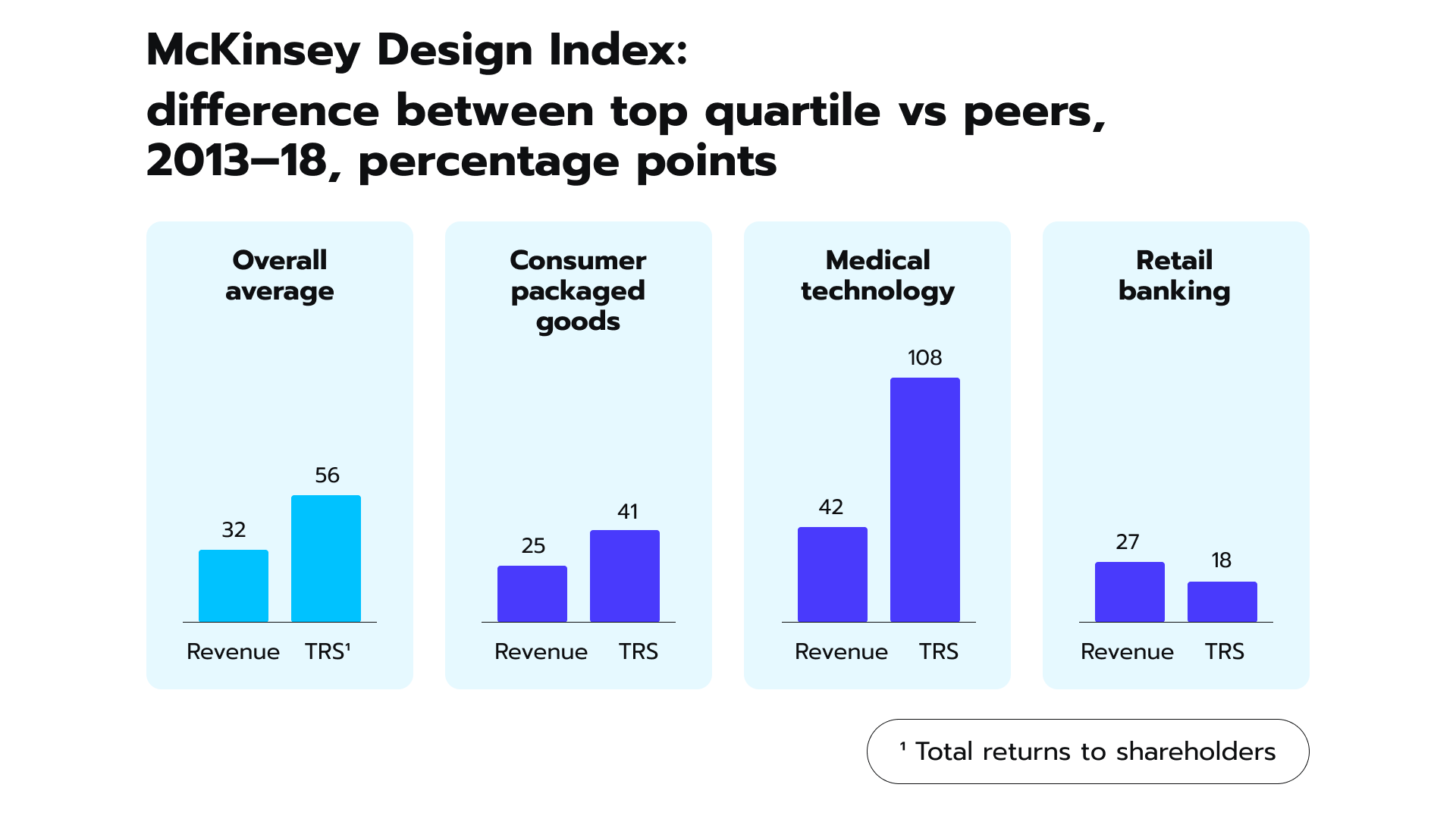Mapping out a UX strategy: ten common challenges
The lack of a robust UX strategy process within a company can pose numerous obstacles to business growth, ranging from misguided decision-making to disrupted communication with clients. In order to assist you in developing a good UX strategy, we’d like to present several crucial mistakes to steer clear of.
1. Focus on business needs at the expense of client-centricity
Often, there is a disconnect between what is valuable for a business and what is beneficial for its clients. A failure to recognize this subtle distinction can trigger complex challenges in the UX strategy. Client-centricity starts with a meaningful UX that meets the specific needs and preferences of its target users. It relies upon the understanding of user behavior and key pain points, and incorporates continuous research into the UX process. Finding the intricate balance between business strategy and customer expectations is possible through regular user testing and user feedback sessions, intuitive navigation, and/or cross-department collaboration.
2. Insufficient or no user research
User research is not an optional extra that can be overlooked or skipped in a UX design strategy. As an essential component of the company’s UX strategy, it offers valuable insights into user motivations, helps gauge desirability, and identifies usability issues early on in the design process. Within this stage of UX research, businesses can create innovative digital products or services that have high adoption rates.
In order to avoid unnecessary complications, a company must conduct its user research thoroughly. It is beneficial to consider a mix of qualitative and quantitative research methods in order to fully support the company’s decision-making. This strategy can lean on guerrilla testing, user interviews, and field studies, as well as surveys or web analytics. In addition to direct user research, analyzing competitors and industry trends is also valuable. This type of market research provides a bigger picture of user expectations, emerging patterns, and opportunities for differentiation. Most importantly, user research should be an ongoing process, not a one-time event. Routinely gather user feedback, iterate on design, and test assumptions in order to refine and enhance the user experience.
3. Documentation overshadowing core UX tasks
Documentation is an essential part of the UX strategy. It reflects key touchstones of the user experience journey and serves as a valuable source of reference. Yet, it can come with a caveat. While it is tempting to invest lots of time and effort into guidelines and specifications, designers and researchers need to keep in mind their often limited resources for user-centered activities. In addition, rigid adherence to the documentation can discourage experts from exploring alternative strategies or challenging assumptions, as they feel bound by the constraints of documented procedures. More effectively, documentation should adjust to the ongoing progress in the design process rather than become a static entity and a barrier to experiments.
4. No resource allocation for UX testing
According to the User Experience Association (UXA), only 55% of businesses perform any form of UX testing. However, this is not some additional unnecessary process that can be overlooked without disruptions to the work. From a technical perspective, UX testing opens up opportunities to identify usability issues and to implement tangible changes so as to refine the final result. It also greatly contributes to understanding how users interact with the product or service in real-world scenarios. Depending on the type of testing (qualitative or quantitative, in-person or remote, as well as explorative, comparative, or evaluative), businesses can easily build a tailored UX strategy that will meet their expectations in terms of the time and resources necessary to strengthen the UX.
5. Investment in innovative UX tech over core UX best practices
Design fads embody a common way of expressing innovative and forward-looking thinking. The question is – do they actually help cope with fundamental design challenges? On the one hand, companies are encouraged to follow the latest trends and stay relevant amid stiff competition as it seems that cutting-edge design patterns make products appear more attractive in the eyes of end users. However, on the other hand, investing in the latest tools or technologies without a solid understanding of user needs can lead to subpar user experiences. The golden mean may lie somewhere between embracing innovation and critically evaluating its impact on the overall UX strategy.
6. Overly complex UX
Complexity can arise from various factors, such as feature creep, poor information architecture, or an overwhelming visual design. As a UX team continuously refines the process and adds new features, it can build up like a snowball rolling downhill. However, a company’s UX should simplify difficult functionalities and clearly communicate how things are supposed to work in the service or product. In order to fix these problems and make things look better, organizations can streamline workflows and eliminate redundant or confusing elements, thereby reducing the cognitive load and strengthening the efficiency of UX.
7. User privacy concerns are not prioritized
While on a journey to crafting an effective UX strategy, teams should have a solid understanding of security practices, supported by a knowledge of how data is stored, transferred, displayed, or manipulated for each component of an application. This implies paying special attention to delivering strong user authentication and access control, clear intuitive app navigation, short log-in times, and effective error handling.
Additionally, depending upon the country and industry of operations, several key security standards such as the Personal Information Protection and Electronic Documents Act (PIPEDA), Health Insurance Portability and Accountability Act (HIPAA), the Payment Card Industry Data Security Standard (PCI DSS), and/or General Data Protection Regulation (GDPR), should be considered to ensure compliance with user privacy regulations.
8. Ignorance of a design system
A design system plays a pivotal role in maintaining coherence across a company’s UX strategy. Embodying a centralized resource for design and development teams, it ensures that all touchpoints reflect the same brand identity and lead to a memorable user journey. In this way, the design system establishes a unified visual language, interaction patterns, and design principles that prioritize familiarity for users. Inadequate adherence to the design system can cause unexpected inconsistencies and eventually disrupt user trust.
How do you avoid this challenge? First, it is a great idea to maintain up-to-date and easily accessible documentation that outlines the design system’s components and usage instructions. This serves as a go-to resource for both teams, guaranteeing they have a clear reference point for implementing the design system correctly. Second, companies can regularly update the documentation as the design system evolves so as to reflect any changes or improvements. And finally, it is necessary to encourage feedback from the teams regarding the effectiveness and usability of the design system. This approach will help team members understand the rationale behind the design decisions and encourage them to follow the established standards.
9. Neglected accessibility
Accessibility in design is one of the main points where a company can translate its inclusive mindset into practical assistance to individuals with disabilities or impairments. With accessibility options, people with visual, hearing, motor, or cognitive disabilities can access and interact with digital products effectively and independently. Several key practices can serve as a baseline for the organization’s design accessibility and alignment with assistive technologies is one of them. It allows users to seamlessly interact with the product on different assisting devices and platforms such as screen readers, speech recognition software, magnifiers, or alternative input devices.
This approach also implies that a business provides an appropriate semantic markup, Accessible Rich Internet Applications (ARIA) attributes, and keyboard accessibility. Another way of amplifying accessibility in UX comes with consistency and clarity in typography and the availability of transcripts for audio content, such as podcasts or videos. In order to support the quest for greater accessibility, organizations can conduct usability testing with the individuals who have disabilities and gather their insights, as well as identify barriers or challenges in the user experience.
10. Lack of performance optimization
In today’s fast-paced digital world, users have little patience for slow-loading websites, sluggish applications, and unresponsive interfaces. They expect instant access to information and seamless interactions, and any delays or performance issues can quickly deteriorate brand loyalty. According to a PwC study, one in three clients will leave a brand for good after only one bad customer experience. That’s why continuous performance optimization can be especially beneficial for companies striving to transfuse their UX strategy with improved website responsiveness and greater customer satisfaction.
Businesses can leverage a variety of techniques to hone their UX. These steps imply refining code and scripts, compressing and optimizing images, implementing caching mechanisms, leveraging content delivery networks (CDNs), and reducing server response times. Regular performance testing and monitoring can help bring about positive transformation and continuous adjustments of the UX strategy to better fit the user’s needs.
Final thoughts
A strong UX strategy starts with the ability to balance between the aesthetic and pragmatic. If an organization prioritizes user needs, adheres to thorough UX testing practices, and fosters a culture of continuous improvement, it can develop a UX strategy that combines great visual appeal and offers top-notch functional value. While creating a successful UX strategy may present some challenges, the rewards far outweigh the effort invested. It’s worth its weight in gold.
Avenga’s design team is made up of 40 professionals that include UX designers, graphic designers, and UI engineers, who work together to create innovative solutions. The design process we use in our daily routine utilizes ‘design thinking’ to solve problems. It starts with user research and discovery, moves on to prototyping and iteration, and ends with assessment and delivery. At its core, the process is about understanding the user’s needs and creating solutions that meet them. If you’re interested in learning more, contact us.


 Figure 1.
Figure 1. 






